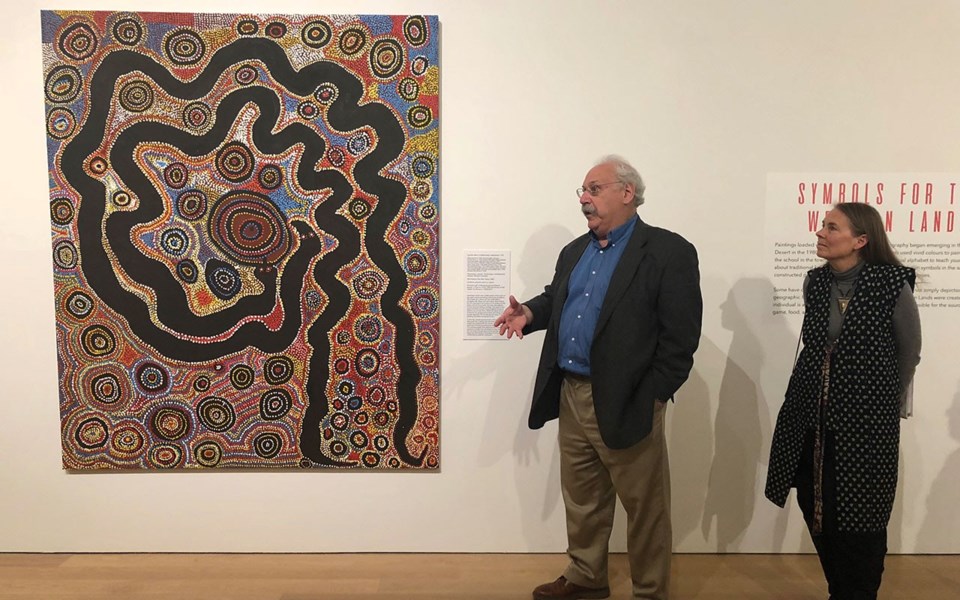When Robert Kaplan and Margaret Levi first thought about venturing into the world of art collecting, they encountered the same issue that, understandably, prevents many from getting involved in the practice.
"We both grew up loving art," Levi explained, but "I couldn't afford what I had grown up to love."
In the late 1980s Levi travelled to Australia as an academic. It was there that she fell in love with Australian Indigenous art and, as some pieces were modestly priced, her love affair with it—and the collection—began.
Since then, the Seattle couple has adventured all around Australia, collecting hundreds of art works in the process. All of them are promised to the Seattle Art Museum. But this fall, visitors to Whistler's Audain Art Museum can view nearly 50 of these works as part of the museum's newest special exhibit, Ancestral Modern: Australian Aboriginal Art from the Kaplan & Levi Collection.
The special exhibit opened to the public on Saturday, Oct. 6, with a curator's tour led by both Kaplan and Levi, along with Pamela McClusky, curator of art of Africa & Oceania at the Seattle Art Museum and Dr. Curtis Collins, director and chief curator at the Audain. It is the first time the exhibit, organized by the American Federation of Arts and the Seattle Art Museum, has been presented in Canada.
Many of Ancestral Modern's contemporary paintings, sculptures and other works represent featured artists' efforts to share their culture with the world. In several cases, the Indigenous Australian and Torres Strait Islander artists featured in the show adapt intricate traditional methods and materials used in ground painting, body painting and the creation of ritual objects to other artistic mediums, like canvas.
Through these mediums, contemporary indigenous Australian identity is explored in depth, including the importance of connections to the land and the prevalence of social and economic inequalities faced by their communities. The exhibition also emphasizes the importance of the ancestral realm in Australian indigenous culture referred to as the "Dreaming." Dreaming narratives are carried throughout the exhibition, drawing on more than 50,000 years of Australian Aboriginal culture.
Ancestral Modern includes works by widely recognized artists Rover Thomas and Emily Kam Kngwarreye, as well as a few pieces that Kaplan and Levi commissioned.
One of those works is Wati Kutjarra (Two Men Story), a large, striking canvas depicting two snakes and featuring mesmerizing, colourful dot work. Differences in the dot work depict important ceremonial grounds, fresh water holes, and desert oak trees.
The piece was painted by the 17-member Spinifex Men's Collaborative, from Tjuntjuntjara, a small community in Western Australia's Great Victoria Desert. In the late '90s, the artists took up painting as a way to express their connection to their land.
Their works—about "10 or 11 paintings," said Kaplan—were formally presented during a court case that, in the end, resulted in a successful land claim for the Indigenous community decades after they were displaced by the government.
"We have an international mandate, along with our regional and national mandate," said Collins of the decision to bring Ancestral Modern to the Audain. The exhibit also "provides a really good opportunity for our visitors to look at contemporary aboriginal art out of Australia, and compare and contrast it to the contemporary aboriginal art we have here from British Columbia," he added.
Aside from standard canvas, the pieces showcased in the exhibit were created with a wide range of materials, including eucalyptus bark, logs, and weaving from various types grasses, "so on a material level it's quite expansive as well," Collins explained.
The exhibition will remain open to the public until Jan. 28, 2019—shortly after Australia Day.




